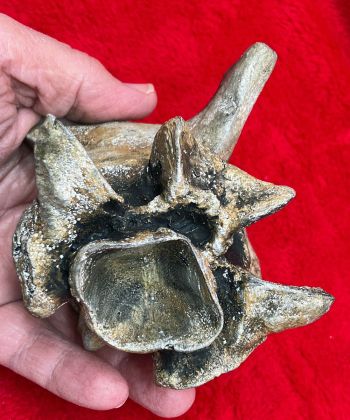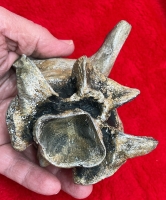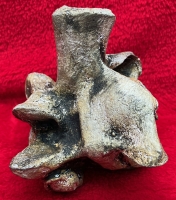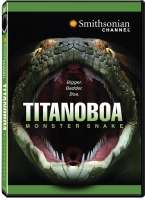
This Titanoboa vertebra is a reconstruction based on an enlarged Anaconda vertebra. It was 3D scanned, printed them molded.
Titanoboa cerrejonensis is an extinct genus of giant boid (that includes all boas and anacondas) snake that lived during the middle and late Paleocene Epoch, 66 million to 56 million years ago . Titanoboa was first discovered in the early 2000s by the Smithsonian Tropical Research Institute who, along with students from the University of Florida, recovered 186 fossils of Titanoboa from La Guajira in northeastern Colombia. It was named and described in 2009 as Titanoboa cerrejonensis, the largest snake ever found at that time. It was originally known only from thoracic vertebrae and ribs, but later expeditions collected parts of the skull and teeth.
Titanoboa could grow up to 13 meters (42.7 feet) long, perhaps even up to 14.3 meters (47 feet) long, and weigh around 730–1,135 kg (1,610–2,500 lb). The discovery of Titanoboa cerrejonensis supplanted the previous record holder, Gigantophis garstini, which is known from the Eocene of Egypt. Titanoboa evolved following the extinction of all non-avian dinosaurs, being one of the largest reptiles to evolve after the Cretaceous–Paleogene extinction event. Its vertebrae are very robust and wide, with a pentagonal shape in anterior view, as in other members of Boinae. Although originally thought to be an apex predator, the discovery of skull bones revealed that it was more than likely specialized in preying on fish.
solid resin
3.25L x 4W x 4.25H inches
Item 4003
Category: Replicas
Type: Bones
Phylum: Vertebrates
Class: Reptiles
MORE PHOTOS:




Now Over 1,000 Items!
PrehistoricStore.com offers the largest selection of replica fossils and other fossil-related products anywhere in the world!
Download a Full Catalog (3MB PDF)
OVER 260 PAGES OF REPLICAS AND MORE!
